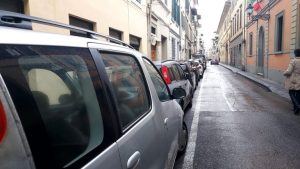- agata@guidemeflorence.com
- +39 348 135 1329
- Monday – Saturday 9 AM – 9 PM
following Saint Francis’ footsteps
Umbria and Tuscany are like two sisters, similar but different. The two regions share the Etruscan and the Roman past, the dishes placed on Umbrian and Tuscan tables have similar tastes. The landscape of their countryside is dominated by hilltop Medieval towns. However, between the two Umbria is the silent sister, who loves the solitude of nature. During the centuries the hills and the woods of Umbria offered shelter to numerous hermits, pilgrims and true spiritual rebels. The most important of them is undoubtedly Saint Francis of Assisi (1181/82-1226). His hometown, Assisi, is a fascinating place where to discover Umbria and where to follow Saint Francis’ footsteps. Let me take you on a day-trip to Assisi!

How to arrive to Assisi?
You can easily organize a day-trip to Assisi from Florence. There is a direct train departing from Santa Maria Novella train station that brings you to Assisi in two and a half hours. You can check the timetable on the Trenitialia website. The train station in Assisi is located in the modern part of the town. From there you can reach the historical centre with a taxi or with an urban bus service. The bus stop is in front of the station and you can buy the ticket in the kiosk at the station.
If during your holiday you move around with a car you can easily arrive to Assisi from the North with the Motorway A1. You exit at Bettole and continue towards Perugia. In Collestrada you have to get to SR (regional road) 147 that brings you to Assisi. You will find many parking lots around the town. You can, for example, leave you car close to San Francesco on Saba parking lot in Piazza Giovanni Paolo II.
Visit Assisi following Saint Francis’ footsteps
Saint Francis of Assisi was born in the town in 1181 or 1182 as a son of a local textile merchant Pietro di Bernardone. The history of Francis’ life is inextricably linked with the town of Assisi, and thus during your visit you can literally follow the Saint’s footsteps.

After more than eight hundred years that passed from the foundation of the Franciscan order, it is very difficult to distinguish the historical truth from many legends, which started to circulate about Francis still during his life. The most widely known version of Saint Francis biography is the so-called Legenda Maior, written by Saint Bonaventure in 1263, thirty seven years after the Saint’s death. According to the biographers, young Francis lived a comfortable life taking advantage of his father successful economic activity. He was trained to work with his father and to take over the enterprise later on. The things changed when in 1202 Francesco took part in a war between Assisi and Perugia. In a battle at Collestrada, lost by the Ghibelline Assisi, Francis was captured and placed in a prison where he spent an entire year. This is when his spiritual journey began.
Living a new life – Francis’ spiritual conversion
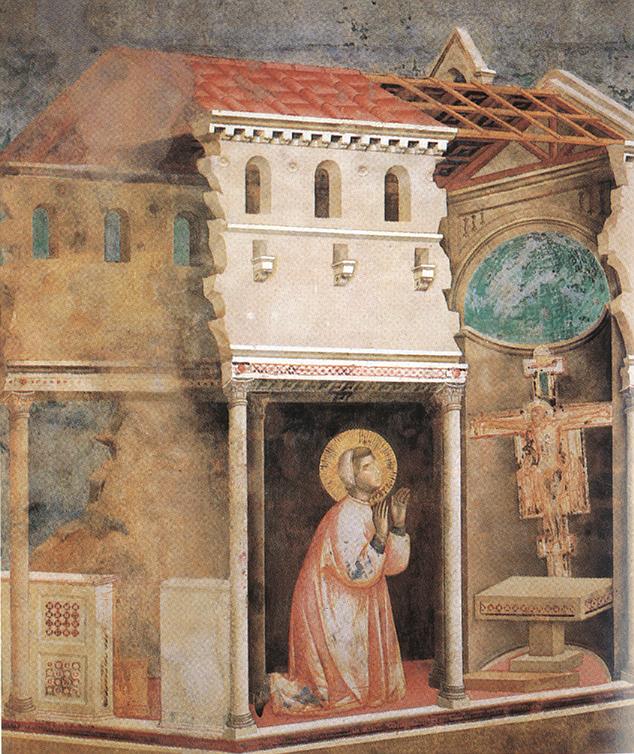
Francesco left the prison thanks to his father who paid the ransom. However, after his return to Assisi, nothing was like before. Once at home Francesco started to notice all the excluded members of the Medieval urban societies, the poor and the sick. Moreover, influenced by religious feelings, Francesco decided to join the fourth crusade. He left Assisi to reach Lecce and the court of Walter III, Count of Brienne. Yet, after just one day of travel, Francesco fell sick in Spoleto and abandoned his initial idea. Back in Assisi he would start spending always more time in a little church just outside the walls of the city, the little sanctuary of San Damiano. There, surrounded by nature and peace Francesco found a new path for his life.
Coming to Florence?
Download my free guide to Florence “Art and the City. Two Squares in Five Masterpieces”!
San Damiano – where everything started

The biographers of Saint Francis recall a vision received at San Damiano in 1205. According to the tradition, during a prayer in San Damiano Francesco heard Jesus’ voice: “Go and repair my house”. At first, Francesco thought about the material renovation of San Damiano itself, thus he sold his horse and his father’s wool and tried to donate these money to the monks for the necessary works.

This generous gesture was a breaking point in Francesco’s life. For his father, a successful merchant, similar waste of money was simply unacceptable. The conflict between the two brought to emancipation of Francesco. The young man abandoned his father’s household and began his itinerant life dedicated to prayer, work and charity.
San Damiano remained a point of reference for Francesco. Here he composed his Canticle of the Sun, a poetry that fully expresses his idea of humble spirituality and respect for nature.
Most High, all powerful, good Lord,
Yours are the praises, the glory, the honour, and all blessing.To You alone, Most High, do they belong,
and no man is worthy to mention Your name.Be praised, my Lord, through all your creatures,
especially through my lord Brother Sun,
who brings the day; and you give light through him.
And he is beautiful and radiant in all his splendour!
Of you, Most High, he bears the likeness. […]

Later, when the centre of Francesco’s activity moved to Porziuncola (today turned into Santa Maria degli Angeli Basilica in the modern part of Assisi), San Damiano became the first convent of Francesco’s female followers. Here lived Saint Clare and her sisters. During the visit to San Damiano you can enter to the church and visit the spaces used by the Poor Clares, the choir, the dormitory, the refectory and the cloister.
San Damiano:
Via San Damiano, 7
06081 ASSISI (PG)
opening hours: 6:15 am-12:00 pm, 2:00 pm-6:00 pm (winter time: 2:00 pm-4:30 pm)
Francesco and the heretics
Francesco’s choice to abandon the wealth, knighthood and comfortable life was a revolutionary gesture in a mercantile society of the early 13th century. His controversial lifestyle exposed him to the risk of an accusation of heresy. In fact, exactly at the same time, when Francesco was experiencing his spiritual conversion, the Roman church was fighting against the Cathars, an orthodox Christian dualist and Gnostic movement, widely spread in Southern France and Italy.

The Cathars, also referred to as Albigensians, believed in a dual nature of the universe characterised by a continues battle between God and Satan, Good and Evil, Matter and Spirit. For the Cathars the material world was a work of Satan. As consequence, they refused the dogma of dual nature of Christ, God and human. Christ, pure Spirit and pure goodness could not live in a material body and thus, according to the Cathars, his body was only an appearance. The orthodox approach to dualism brought the followers of this spiritual movement towards a total refusal of materiality. Often, after the spiritual initiation and purification, the Cathars would starve to death believing that only this way they could reunite with the Spirit without losing their purity.
In that context, Francesco’s refusal of material goods could have seemed suspicious to the religious authorities. Francesco risked an open conflict with the church. Yet, the pope Innocent III, who in 1208 promoted a crusade against the Cathars, in 1209 approved the rule of the mendicant order of Friars Minor accepting Francesco, his followers and their ideas and confirming their conformity with the teaching of the Church. In some way, the approval of the Franciscan movement allowed the papacy to canalise towards a less orthodox movement the mendicant tendencies and ideas circulating in Europe.
The Franciscans – the birth of a new religious order
A seminal element of this strategy was the construction of the magnificent Saint Francis Basilica in Assisi started in 1227 under the supervision of Elias of Cortona, one of Francesco’s first followers and Vicar General of the order.

The approval of the rule sealed the success of Saint Francis’ ideas, at the same time forcing Francesco to accept compromises, which with time will change his community into a religious order. If the first Franciscan communities functioned as groups of itinerant mendicants, who did not have proper homes and lived thanks to the material retribution for their physical work, after Saint Francis’ death the Franciscans were always more rapidly changing into a settled and stable order organized around the convents.
Coming to Florence?
Download my free guide to Florence “Art and the City. Two Squares in Five Masterpieces”!
The construction of San Francesco Basilica in Assisi
Francesco died in 1226 and he was initially buried in the church of San Giorgio, located in the past in the area of today’s Piazza Santa Chiara. Yet, the Franciscans, supported by the papacy, wanted to create in Assisi the centre of Saint Francis’ devotion. The canonization process proceeded speedily and already in 1228 Francesco was declared Saint. The lower Basilica, conceived as a crypt for Saint Francis’ body was partly ready in 1230 and Francesco’s earthly remains were moved there and placed under the main altar. The construction works in Assisi continued. The lower basilica was surmounted with the upper church, thought as a space were to gather the masses of pilgrims and believers for the preaching.
Visual storytelling in Assisi
The newly built basilicas needed to be decorated and the decoration was aimed at the glorification of the Franciscan order and of its founder, Francesco. In 1263 Bonaventure of Bagnoregio, the Minister General of the Order, concluded the composition of the official biography of the Saint, called Legenda Maior. This new life story became the source for the frescoes, which translated the narrative into captivating images. The aim of the decoration was to show Saint Francis as a renovator of the church and as “alter Christus”, the one who followed Jesus’ example so well, as to mirror Christ’s life in his. The final prove of the sanctity of Francesco were the stigmata he received in 1224 while praying on the mount Verna.

The lower and the upper basilicas were decorated in numerous artistic campaigns, started in the mid-13th century. On the walls of the both churches you can admire the frescoes by Cimabue, Jacopo Torriti, Giotto and his pupils, Piero Lorenzetti, Simone Martini and others, often anonymous, masters. In fact, Assisi became a true fresco laboratory where the greatest masters, such as Giotto, were developing their style. The flatness was gradually substituted by a greater interest in depth, stiff and unemotional style became more engaged, natural and truthful. You can see all these changes while admiring the rich decoration of the two churches. What you cannot miss?
The frescoes in Saint Francis Basilica in Assisi
The lower basilica:
- 1st chapel on the left – Saint Martin’s chapel – the decoration commissioned by Cardinal Gentile Partino da Montefiore was painted by Simone Martini between 1312 and 1320. On the walls you can admire the stories of Saint Martin
- 3rd chapel on the right – Chapel of Saint Mary Magdalen – the decoration commissioned by Tebaldo Pontano, Bishop of Assisi was painted by Giotto and his pupils after the return of the painter from Padua in 1305. On the walls you can see the stories of Mary Magdalen.
- the vault above the main altar – frescoes representing the allegories of the Franciscan virtues: Poverty, Chastity, Obedience and the Apotheosis of Saint Francis. The frescoes were painted during the 1320s and they are attributed to Giotto’s pupils.
- right transept – Madonna with Child, four angels and Saint Francis by Cimabue
- end of the right transept – Chapel of Saint Nicholas – built by Napoleone Orsini in the late 13th century as a funerary chapel for his brother Giovanni Orsini died in 1292. On the walls Giotto’s disciples painted the Stories of Saint Nicholas.
- left transept – New Testament stories and Madonna with Child with Saint Francis and Saint John Evangelist by Piero Lorenzetti

The upper basilica:
- left transept – the Crucifixion by Cimabue
- the nave – lower tier of the decoration – Live of Saint Francis attributed to Giotto and his pupils
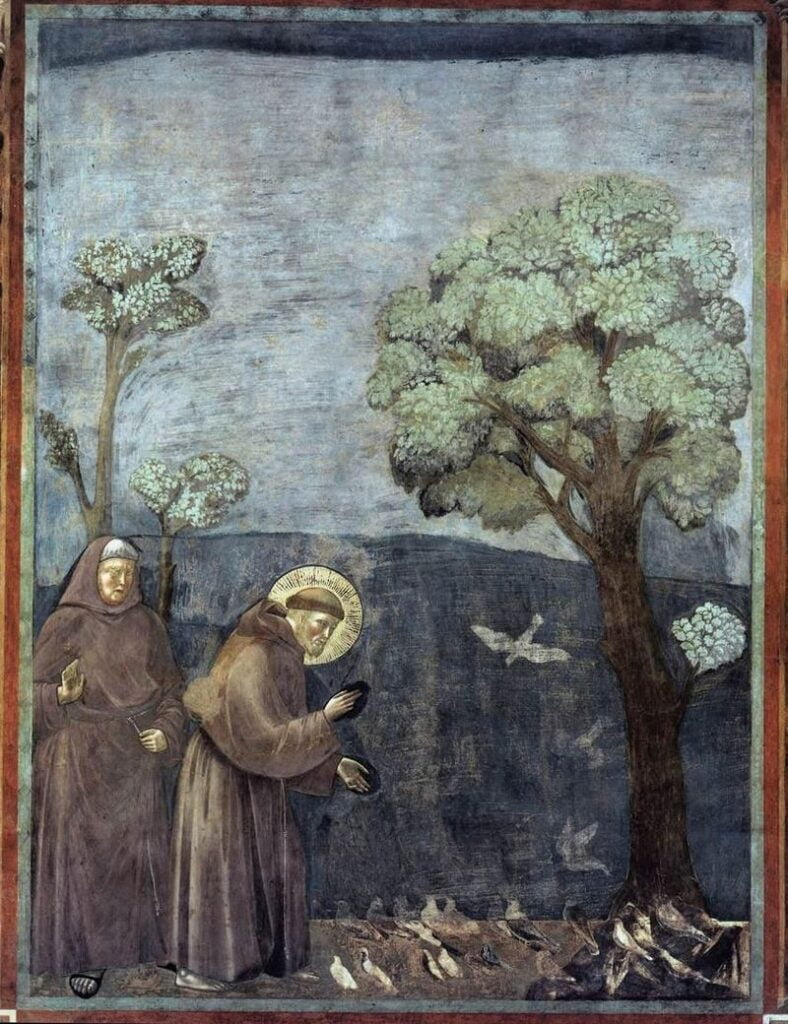
San Fracesco Basilica, opening hours
the lower church:
Mon-Sat 8:30 am – 6:30 pm
Sun 10:30 am- 4:30 pm
the upper church:
Mon-Sat 8:30 am – 6:45 pm
Sun 1:00 pm – 6:45 pm
Little treasures of Assisi: Santa Chiara, San Rufino, la rocca

San Francesco Basilica is undoubtedly the most important historical sight in Assisi. However, during your visit it is worth entering also to Santa Chiara, where you can admire the original 12th-century crucifix from San Damiano.
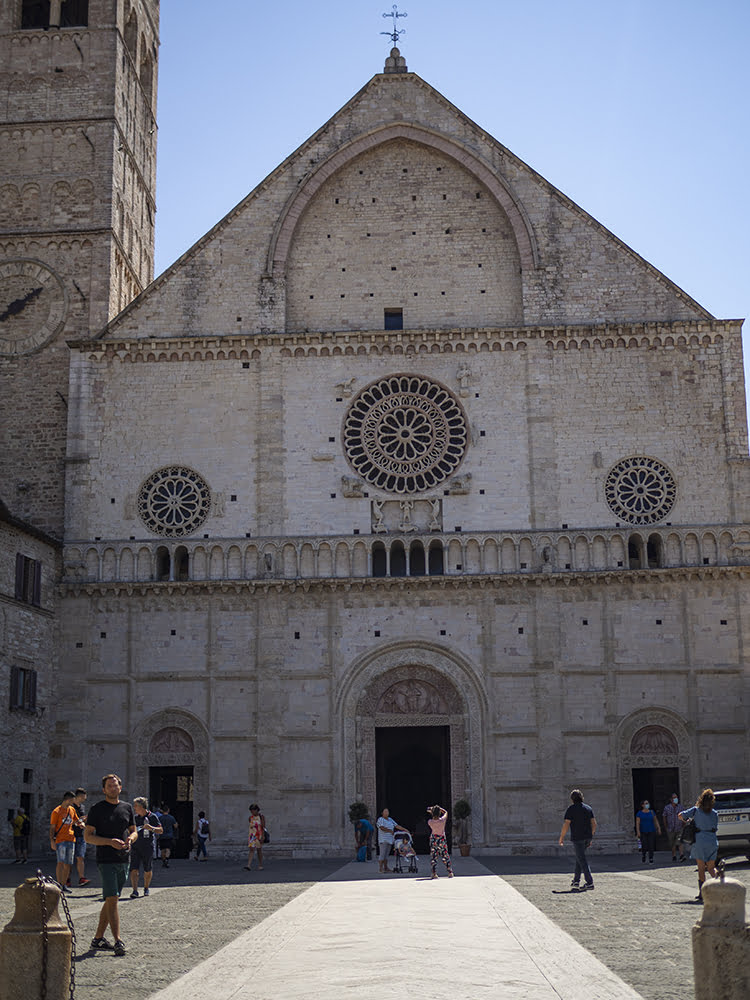
The cathedral of Assisi is the Church of San Rufino, where Saint Francis and Saint Clare were both baptised. In the church you will find two beautiful statues of the saints from Assisi sculpted by the Florentine artists. Giovanni Dupré is the author of the figure of San Francesco, while his daughter, Amalia Dupré sculpted Santa Chiara.
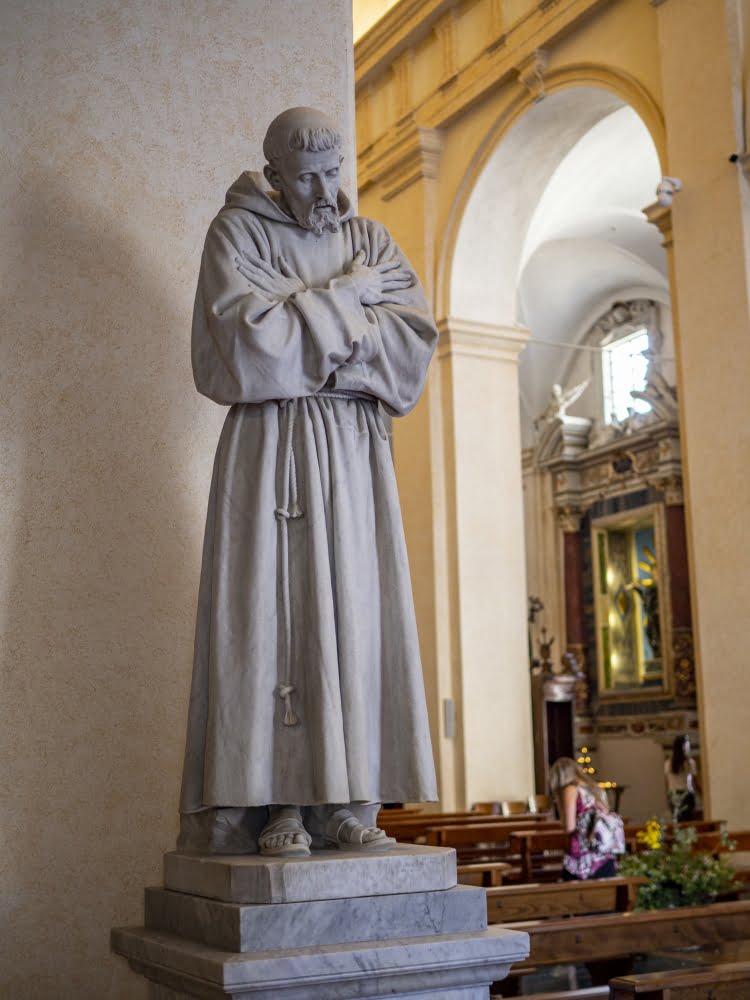
Coming to Florence?
Download my free guide to Florence “Art and the City. Two Squares in Five Masterpieces”!
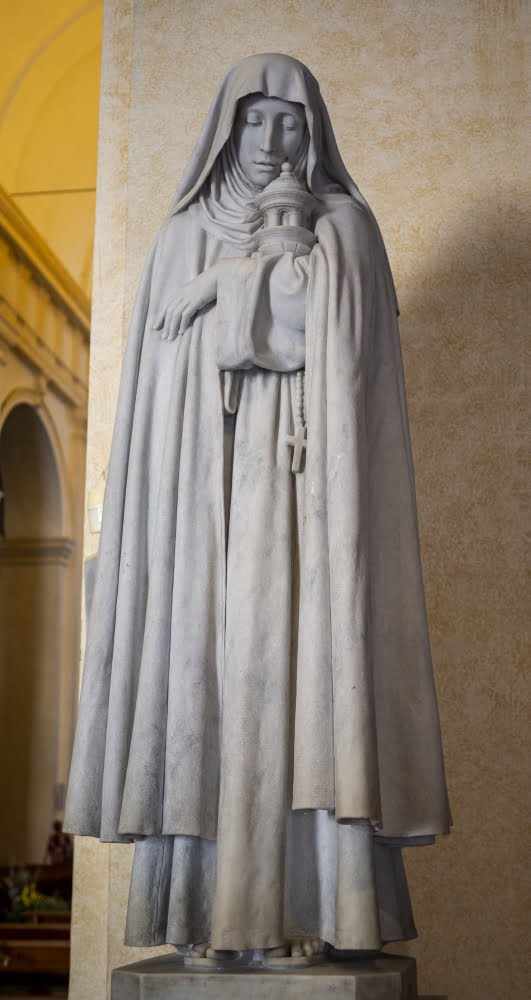
If you want to see Assisi from a surprising perspective, from San Rufino you can climb the top of the hill and arrive to the fortress of Assisi, called La Rocca. The fortress was built around 1173 when Assisi was conquered by Christian I, Archbishop of Mainz, in the name of the Emperor Frederick Barbarossa. Destroyed by the citizens of Assisi in 1198 it was rebuilt during the fifteenth century, when Assisi was already part of the Papal State.

A visit to Assisi is a trip to the heart of Medieval religiosity. Here we can follow the footsteps of Saint Francis and at the same time observe the substantial changes in the pictorial style of the early fourteenth century. If you add to that a tasty lunch with a piece of the traditional torta al testo (a focaccia bread filled with different stuffing) and a glass of red wine, you will pass un unforgettable day!
If you want to visit Assisi with me, contact me! I will be happy to tell you more about Saint Francis and the art hidden between the walls of this unique town.

